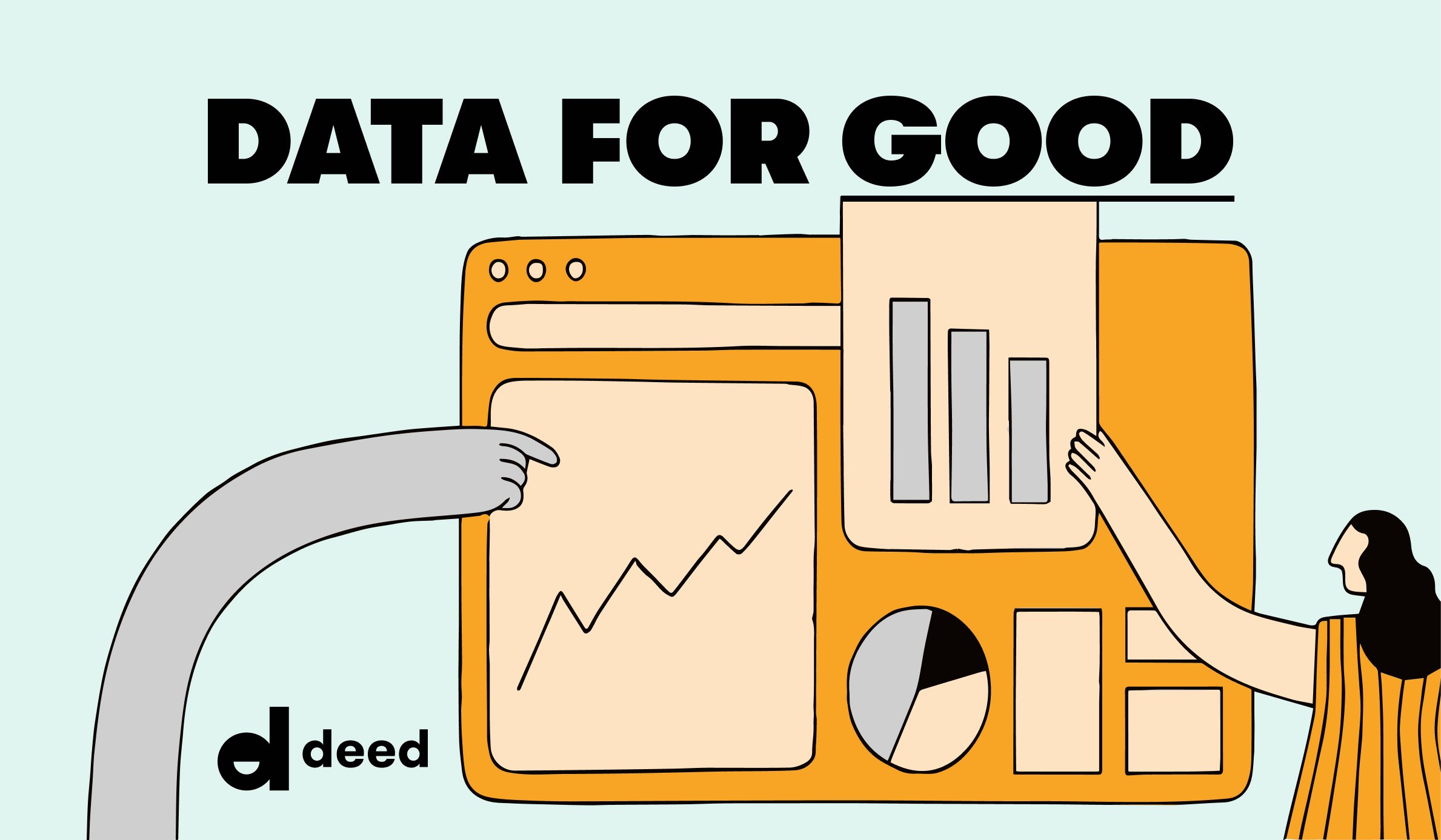Data for Good
Introducing our new series, plus best practices for everyday data management and annual reporting
Introduction
We know that data is at the core of social impact storytelling, from sharing good news on social media to annual reports. But how do the global leaders in corporate social responsibility (CSR) go about capturing, assessing, and incorporating data into their programming?
As a data analyst helping new members of our community get started using Deed, I’ve seen firsthand how challenging it is for complex, multinational organizations to ensure that all of their core metrics are represented in their social impact technology. In my capacity as Head of Data Strategy, I work closely with a team of data engineers and some great partners to measure impact in a way that helps social impact teams meet their goals.
While you do not need to have read our “Social Impact Storytelling” series or joined our “Maximizing Social Impact” webinars before reading this article, I recommend taking a look! The goal of this series is to build on the foundation of that work and offer a closer look at some effective tactics. To that end, I want to revisit some of the core insights from the introduction to “Social Impact Storytelling,” which focuses on how to produce a winning year-end impact report, and layer on some best practices related to data.
Three ways to identify accurate, compelling data
In recent months, I have had the privilege of leading a series of webinars on social impact measurement alongside Gabe Cohen from True Impact. We have been fortunate to host guest speaker Jon Perri from Ripple, and together, we have tackled various questions on selecting metrics and data points, collecting data, and creating impactful reports.
While there is no universal way that every company “should” include data in an impact report, it is crucial for social impact leaders to identify the data that best tells the story of their combined corporate and employee impact. How can they go about that? Here are three key components to keep in mind.
1. The maturity of the impact team and initiatives
The goals and metrics chosen for an impact report likely align with the impact team's stage of development and the nature of the initiatives undertaken.
For instance, a newly formed impact team may prioritize metrics related to employee engagement rather than financial outcomes.
The newer impact team is likely still learning what types of initiatives get employees excited and engaged.
As initiatives evolve and lessons are learned, goals can be refined and advanced based on data-driven insights and accessibility.
2. The capacity of the impact team and support from other departments
The size and skillset of the impact team, as well as the extent of support from other departments, play a significant role in data collection and reporting.
Remember that for every goal the impact team sets, there might be different data collection sources and processes. It is essential to ensure that data collection remains manageable and doesn't overwhelm the team. If an impact team can leverage resources or collaborate with relevant teams, including marketing, communications, or data analytics, it may be feasible to capture more extensive or complex data points.
Although approaches to impact measurement can change dramatically from one organization to the other, both large and small impact teams are increasingly leveraging social impact platforms like Deed to go beyond spreadsheets and surveys. With real-time dashboards and customized reports, the world’s CSR leaders like Airbnb and lululemon rely on Deed to inform their daily decisions and fill out their year-end impact reports.
3. The data format(s) that effectively communicate impact
Are you thinking through what format would best represent your impact data? Avoid copy-pasting endless tables and charts or writing pages of dense paragraphs. These formats diminish the ease with which readers can read and digest the information.
Instead, consider weaving bold visuals and multimedia assets into a cohesive, compelling narrative. Remember, you’re making the case for why your organization is a force for good in the world. Corporate donations and employee volunteerism, for example, aren’t just numbers—they are the centerpieces of an incredible story.
You may want to highlight key statistics on a dedicated page, include captivating photos, and use line charts to illustrate the upward trend of impact over time. Data visualizations, such as charts, graphs, and key performance indicators, are a great way to make data pop—and help you share your impact with the world.
Closing Thoughts
A data-driven approach to social impact reporting empowers organizations to showcase their efforts, engage stakeholders, and foster positive change.
“Data for Good” is a new series that aims to help social impact teams use data to do ever-better work. Remember: Your reporting needs will likely evolve over time as your initiatives grow. The best way to stay on top of your data and share your impact with the world is by leveraging social impact technology that not only drives employee engagement but also keeps track of all your most important metrics and gives you the insight you need to improve.
Deed is an all-good-in-one workplace giving and volunteering platform trusted by Airbnb, lululemon, Ripple, and more. We take a data-driven approach to everything we do, from employee engagement to event management. If you’re ready to see how the way you capture and share your data can make a difference, book a live demo today.
Do more with data. Do more with Deed.
Christine Tringale
Head of Data Strategy


